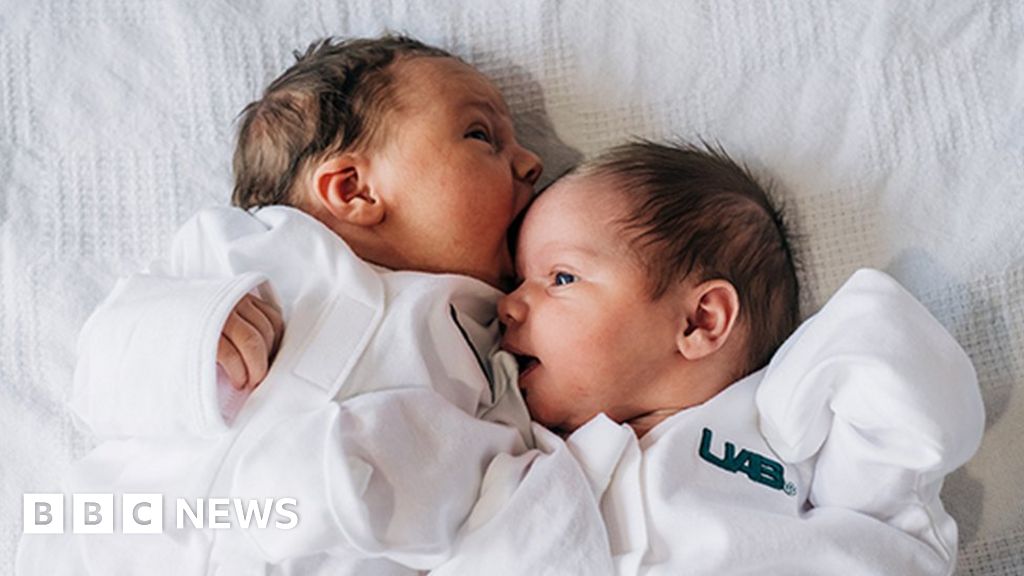- cross-posted to:
- [email protected]
- cross-posted to:
- [email protected]
Kelsey Hatcher, 32, delivered one daughter on Tuesday, and a second on Wednesday, at the University of Alabama at Birmingham (UAB) Hospital.
Announcing the arrival of her “miracle babies” on social media, Ms Hatcher hailed the medics as “incredible”.
The girls are described as fraternal twins - with rare separate birthdays.
Hatcher said the family was now back at home and could “enjoy the holidays”. She had previously expected a Christmas due date.
The mother was told at age 17 she had a double uterus (uterus didelphys) - which the UAB described as a rare congenital anomaly affecting 0.3% of women.
And the odds of becoming pregnant in both uteri - a dicavitary pregnancy - were even slimmer, at “one in a million”, according to the UAB.
They designated them as twins. How far apart would they have to be for them not to be considered twins? Say someone with the same condition gets a second pregnancy started 3 months later and delivers 3 months apart. would those still be considered twins?
deleted by creator
I suspect that it would be impossible to get a 2nd pregnant after a couple of weeks of the first. The baby produces hormones that stop ovulation. The 2nd one would have to be in before that window.
I also suspect that the birth of the 1st would induce the second. She likely didn’t leave labour, the 2nd just took longer, since it was, effectively, induced by the first.
Going back to the broader question, it’s likely that both were inside the mother at the same time. In theory they could be 9 months apart, though that would likely require significant medical effort, and so is effectively impossible.
Really interesting point! Also, what about babies born via IVF that don’t technically share a womb at the same time, but were from the same “batch” of sperm and eggs?
I mean, we’d be talking the absolute fringes of medical phenomena. In my opinion if they dicavitary at all, they’re twins, regardless of time.
Some women don’t even have one womb. This is womb inequality at its worst.
Is this a kulak?
If only there were such womb-justice.
What if both wombs conceived twins 😱😱
Sounds like tiny babies or a pretty extreme pregnancy
0.3% of all women isn’t even that rare. nor is one in a million [pregnancies]
That is rare, and being pregnant in both is what’s “one in a million.” Have you heard of this happening before?
I get where the other poster is coming from tho, it sounds like 3500 women alive right now will have this type of pregnancy (1 in a million of 3.5bn women)
However, I think its of the .3% that are born dicavitary, there is THEN a 1 in a million shot to have both uteri fertilized, which means it would only happen once every few generations.




